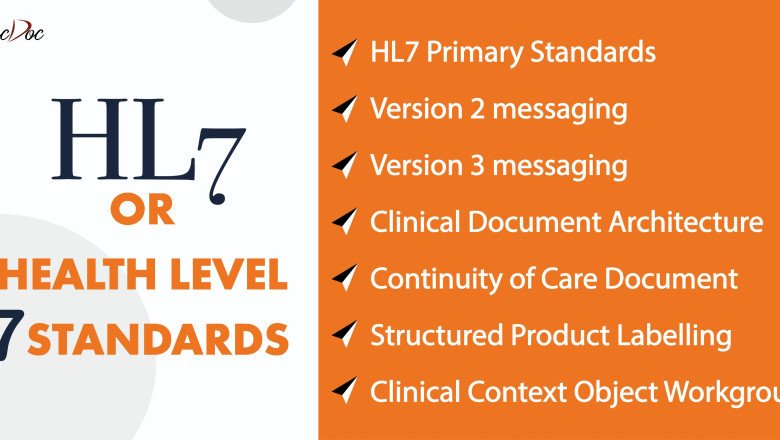
views
HL7 or Health Level 7 standards
The advent of digital healthcare transformation has brought forth significant advancements in healthcare facilities worldwide. To streamline healthcare solutions, it is imperative to have an optimal system that governs how information is shared between various software applications. This is where HL7 or Health Level 7 standards come into play.
HL7 Primary Standards: HL7 is a set of standards developed by the Health Level 7 organization that governs the design of healthcare software. Based on the seventh layer of the Open Systems Interconnection or OSI protocol, HL7 sets the principles for how software should communicate health information between different applications.
Adhering to HL7 standards helps optimize digital healthcare, providing improved data transmission, interoperability, and patient care. Healthcare software companies follow several primary and other standards of HL7 to ensure streamlined data exchange. These standards include:
Version 2 messaging: This standard defines how messages are structured and what messages can be exchanged between healthcare systems based on segments, fields, and data types.
Version 3 messaging: This standard also defines the structure and context of messages but in an object-oriented approach.
Clinical Document Architecture: This standard defines the structure and semantics that must be followed when sharing clinical documents.
Continuity of Care Document: This standard defines the encoding, structure, and semantics for exchanging medical summaries.
Structured Product Labelling: This standard sets the norms for the information published for prescribed and labeled medicines.
Clinical Context Object Workgroup: This standard sets the norms for real-time synchronization of applications at the user interface level.
Other HL7 standards that ensure streamlined data exchange include Fast Healthcare Interoperability Resources (FHIR), Services Aware Interoperability Framework (SAIF), Arden Syntax, and Minimum Lower Layer Protocol.
By following HL7 standards, healthcare software companies can benefit from improved data uniformity, effective interoperability, and cost-effective methods. HL7 standards ensure that data transmitted across platforms or frameworks is uniform, eliminating variations in medical information. Moreover, the data transmitted is highly interoperable, requiring no manual intervention. With a perfect system for handling patient information and records, healthcare facilities can provide extensive support for patient care. HL7 standards also set the rules for data transmission between recent trending wearable healthcare devices, making healthcare solutions more effective.
In conclusion, adhering to HL7 standards is essential for healthcare software development companies to attain their mission of providing comprehensive solutions for management at healthcare facilities. Utilizing software developed based on HL7 standards helps maintain compliance with HIPAA and supports high data monotony across the transmitted entities.












Comments
0 comment